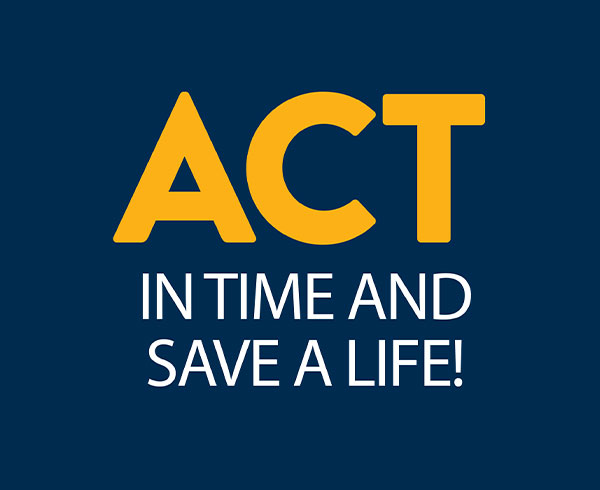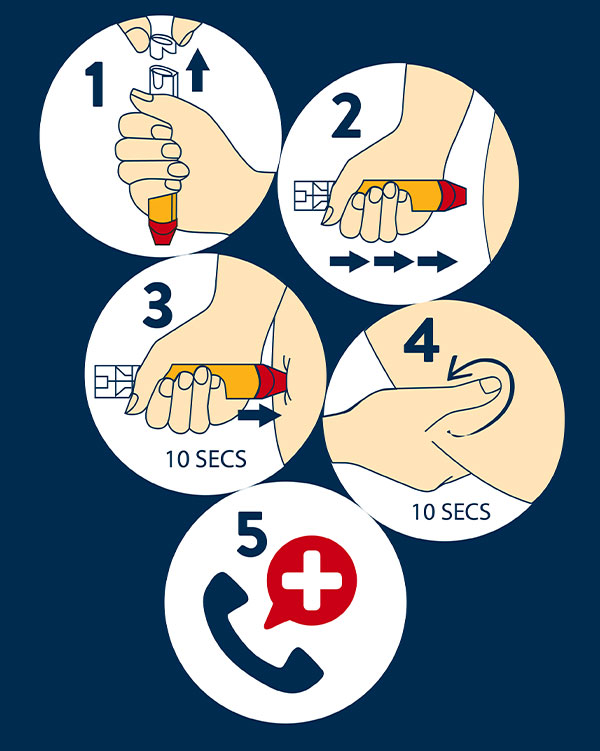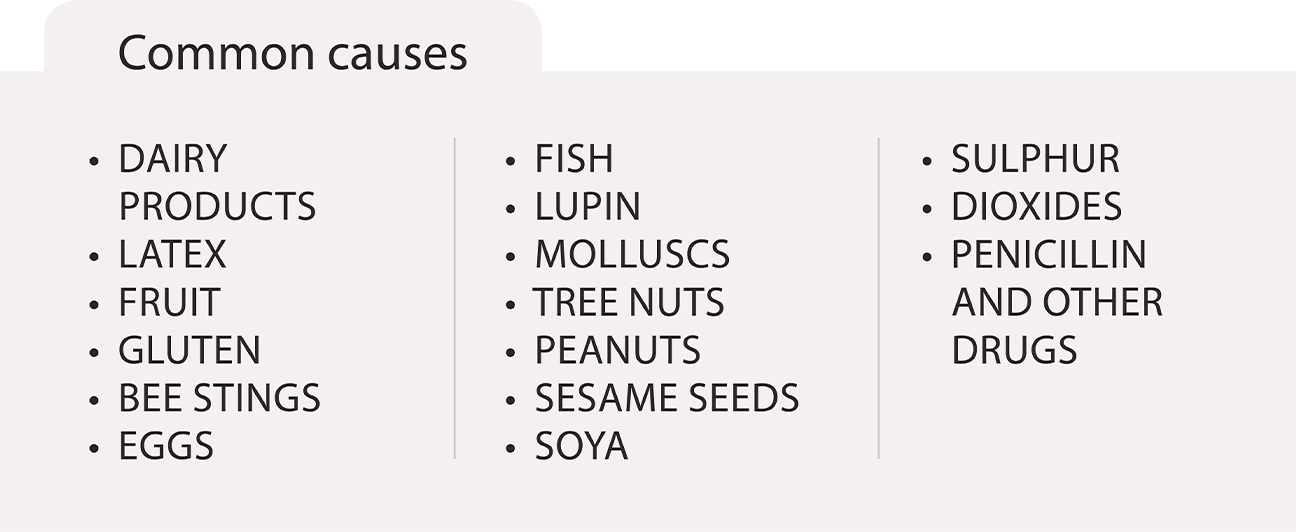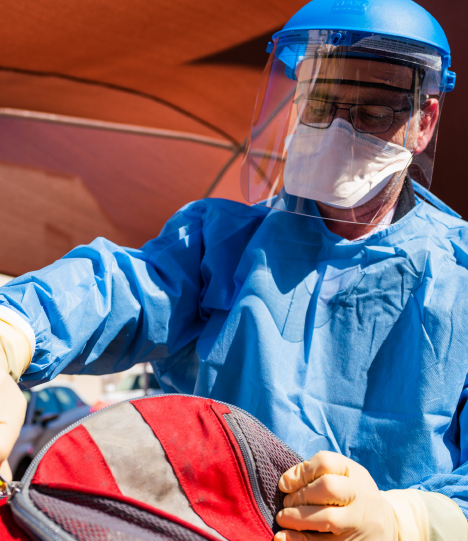Anaphylaxis

Anaphylaxis can be life threatening, but you can save a life if you ACT in time.
Signs and symptoms
- Severe diffculty breathing
- Diffculty speaking (due to swelling)
- Tightness in the chest
- Anxiety
- Swelling around the face/lips/mouth
- Obvious rash - itchy, red, welts
- Unconsciousness

How to use an epipen®

- Hold in your dominant hand and pull off blue safety release.
- Swing and jab the tip of the Epipen into upper, outer thigh (with or without clothes, but avoiding seams).
- Hold the injection in place for 10 seconds.
- Massage the injection site for 10 seconds.
- Phone for an ambulance.
Avoid eating or drinking anything. Do not take/give any other medication or medical remedies. The most common anaphylactic reactions are to foods, insect stings, medications, and latex.







